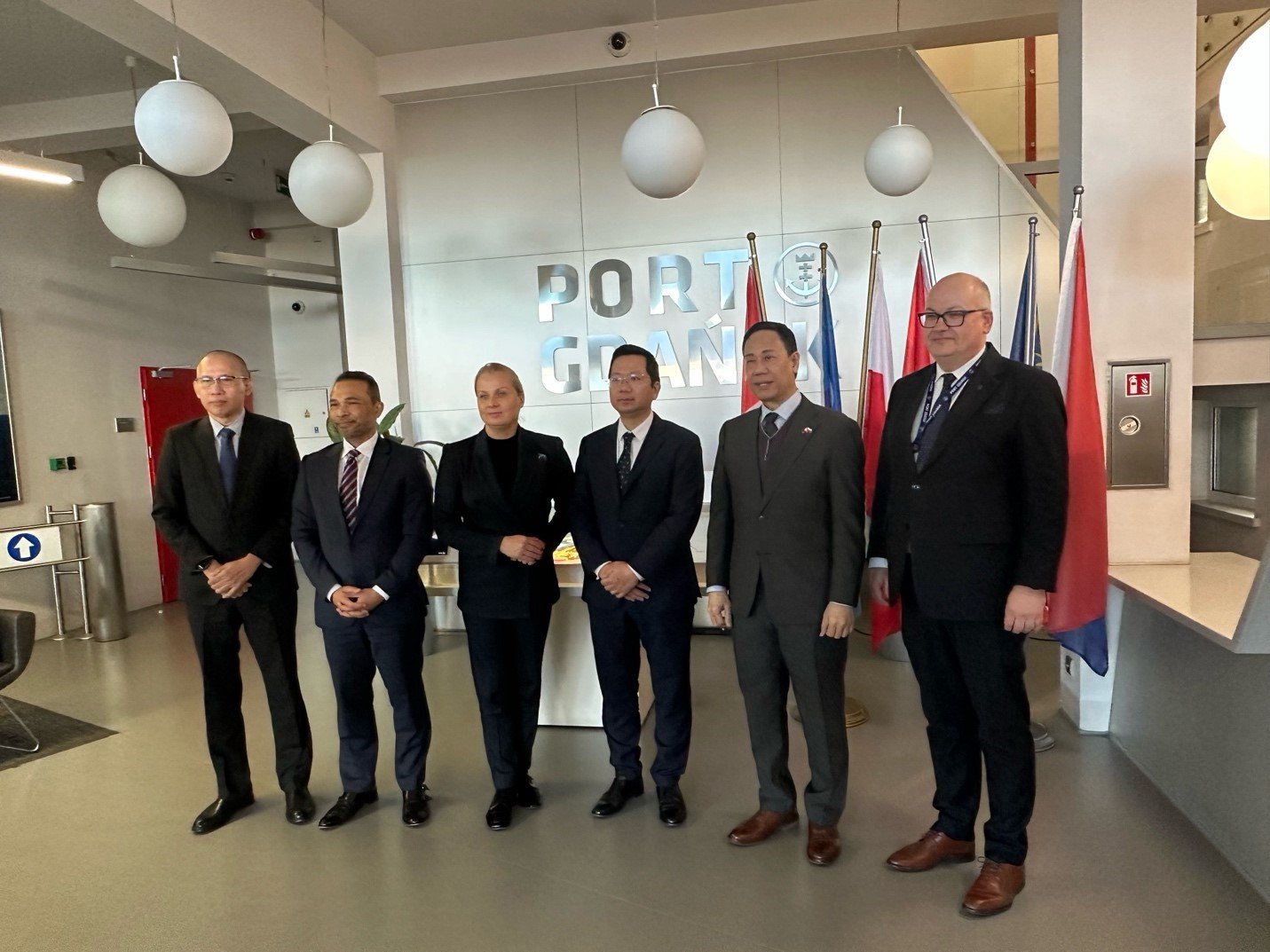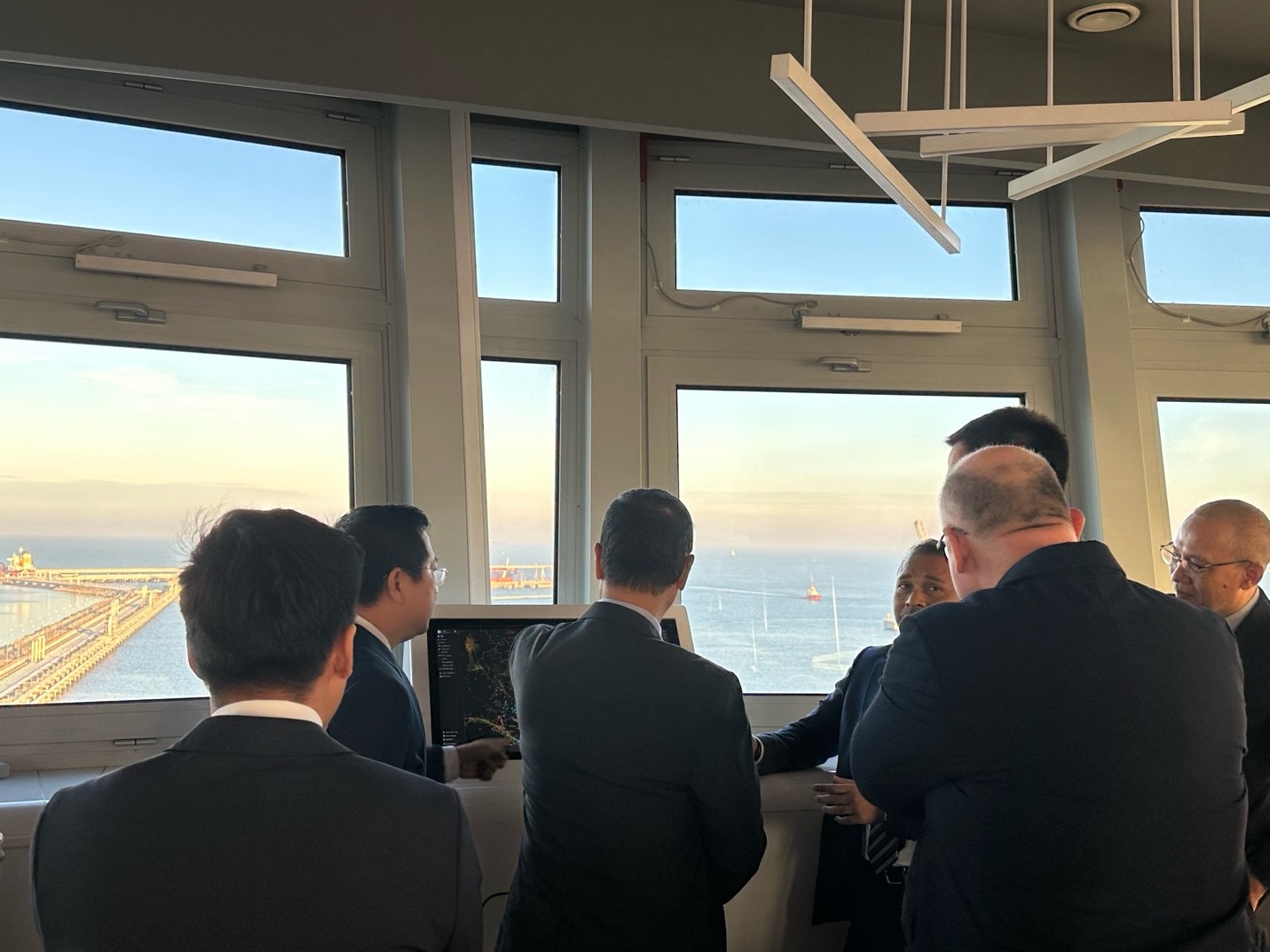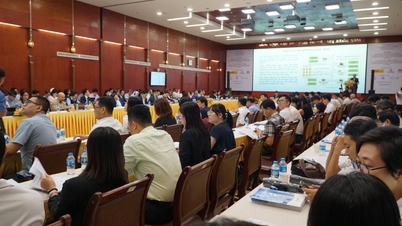The Port of Gdansk is divided into two areas, the Inland Port which can accommodate ships up to 250m in length with a maximum depth of 10.5m and the Outer Port located on the waters of the Gulf of Gdansk which can accommodate ships up to 400m in length with a maximum depth of 15m, at a basin depth of 17m. The Port has a modern transport infrastructure system, convenient for rail and car traffic to the transshipment terminals located in the Outer Port. The Port is expanding and modernizing the road and rail network by building and modernizing about 7.2km of road and about 10km of rail. In addition, the Port of Gdansk is the only port in Poland licensed to import and export crude oil with a modern underground pipeline system. Currently, all crude oil imported and exported from Poland is transported through the Port of Gdansk.
In 2023, Gdansk Port will rank 3rd in terms of the Port with the shortest shipping route to other European countries (after Amsterdam Port and Trieste Port). In 2014, the volume of goods transported at Gdansk Port was only 32.3 million tons, but by 2024, this number had increased to 77.4 million tons. Of which, 51.0% of the transported goods were liquid fuels; 30.3% were ordinary containers and wood; the rest were other goods.

ASEAN Ambassadors in Poland take souvenir photos with the Chairman of the Port of Gdansk
With the goal of becoming the Baltic Hub of the region, the Port of Gdansk is currently continuing to invest in the construction of the T3 port area with an area of 36 hectares, a length of 717 meters and a depth of 18 meters, with an expected transshipment capacity of 1.5 million TEU (from 3 to 4.5 million TEU) per year. The Port is also investing in the construction of an LNG Port, expected to be completed in 2028. The Baltic Hub is expected to be completed by the end of 2025, becoming one of the largest container terminals in Europe in terms of transshipment, serving more than 600 ships per year, including 100 of the world's largest container ships. In addition, with the goal of attracting frozen food shipments from Asia to Poland and Europe, the Port of Gdansk is building a cold storage warehouse with a warehouse area of up to 15,500 m2.
Gdansk Port has 5 shipping routes: (i) Asia – Europe Mainline, Gdansk Port is the final destination or main transit point of routes from China, Korea, Japan, Singapore, Malaysia and Vietnam; (ii) Intra-European Routes, these routes mainly transport containers, bulk cargo and RO-RO cargo to ports of Nordic countries, Germany, the Netherlands, Belgium, the UK and Ireland; (iii) Baltics and Russia Route, due to the impact of sanctions, some routes to Russia have been suspended, currently maintaining routes to Tallinn (Estonia) and Riga (Lativa); (iv) Passenger and ferry route, Gdansk Port transports the ferry route from Gdansk – Nynasham (Sweden) which is operated and operates regularly; (v) Inland connection route, from Gdansk Port, goods are transported deep into inland Europe by rail or road.
For the main international shipping route Asia - Europe of Gdansk Port, previously, shipping vessels passed through Asia via the Suez Canal, stopped at intermediate ports such as Rotterdam, Hamburg, and then arrived at Gdansk with a time of about 40 - 45 days. However, due to the recent conflict in the Red Sea area, shipping vessels deployed a new route via Africa, making the shipping time longer up to about 60 - 65 days.
In the Southeast Asia region, the Port of Gdansk currently has a weekly shipping route to Klang, Malaysia, and a shipping route to Vung Tau, Vietnam. Ships from these routes still pass through Africa, then loop to the intermediate port of Gothenburg, and then to Gdansk.

Port representatives discussed with Ambassadors about infrastructure and ongoing investment projects at the Port of Gdansk
In order to save costs and time for transporting goods from Asia to/from Gdansk Port, as well as increase the competitive advantage of Gdansk Port compared to other ports in the region, recently, Gdansk Port has deployed a pilot operation of a new transport route from Asia around the Arctic Ocean and then directly to Gdansk Port, which helps shorten the transport time by about 1/3. This route is expected to help promote trade between Asian and European countries in the coming time, and at the same time help Gdansk Port consolidate its position as a strategic gateway to penetrate the Central and Eastern European markets.
On the occasion of Vietnam holding the rotating chairmanship of the ASEAN group in Poland, on November 6, 2025, the Trade Office participated in the working delegation of Ambassadors and Trade Representatives of ASEAN countries residing in Poland to visit and discuss the potential for cooperation between ASEAN countries and Gdansk port. During the working program, the delegation of the Vietnamese Embassy had a working session with the leaders of the Primorski Province government (where Gdansk Port is located) to introduce the tourism and trade potential of Vietnam and invite the trade delegation of the Province to attend trade events and seek cooperation opportunities with Vietnam, including the possibility of establishing a twinning relationship with Hai Phong city. Because Hai Phong is also the leading economic center and seaport in the northern region of Vietnam and is the workplace of many former Vietnamese students and postgraduates who were trained in the fields of maritime transport and shipbuilding in Poland in the past.
Source: Vietnam Trade Office in Poland
Source: https://moit.gov.vn/tin-tuc/cang-gdansk-ba-lan-cung-co-vi-the-cua-ngo-thi-truong-dong-va-trung-au.html































































































![Dong Nai OCOP transition: [Article 3] Linking tourism with OCOP product consumption](https://vphoto.vietnam.vn/thumb/402x226/vietnam/resource/IMAGE/2025/11/10/1762739199309_1324-2740-7_n-162543_981.jpeg)













Comment (0)